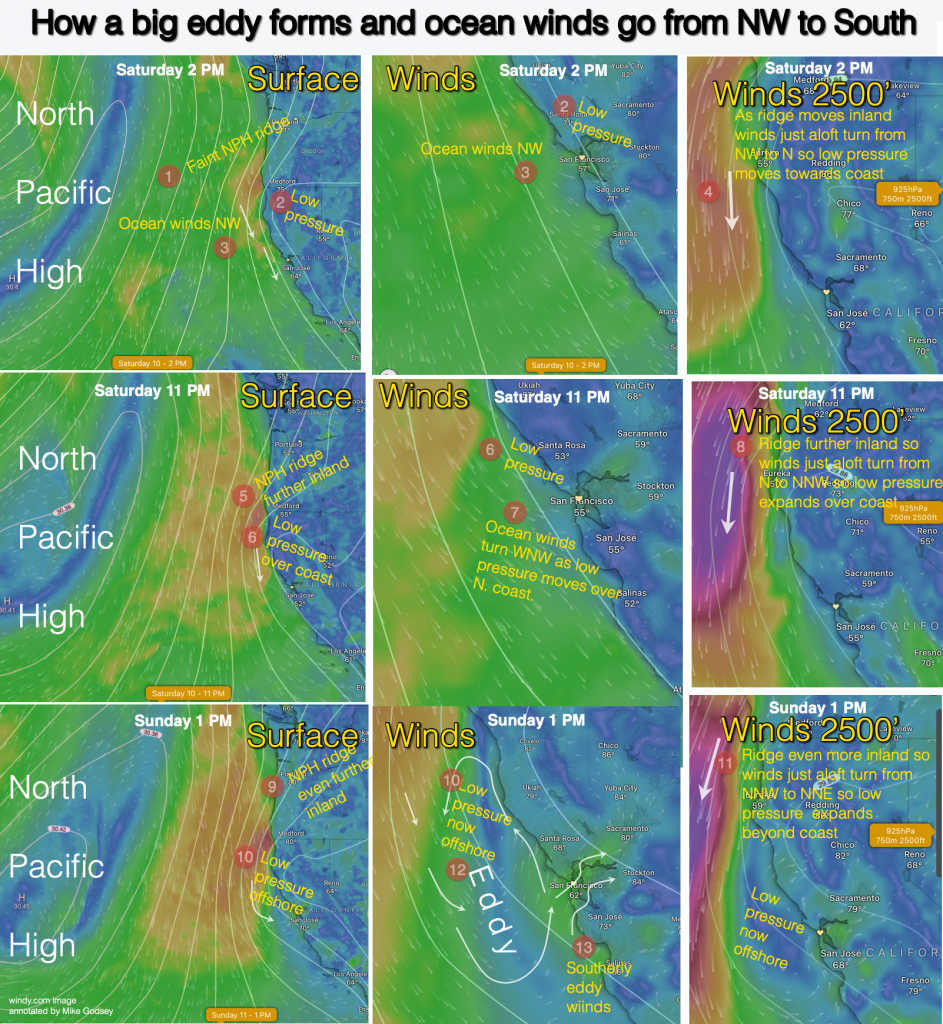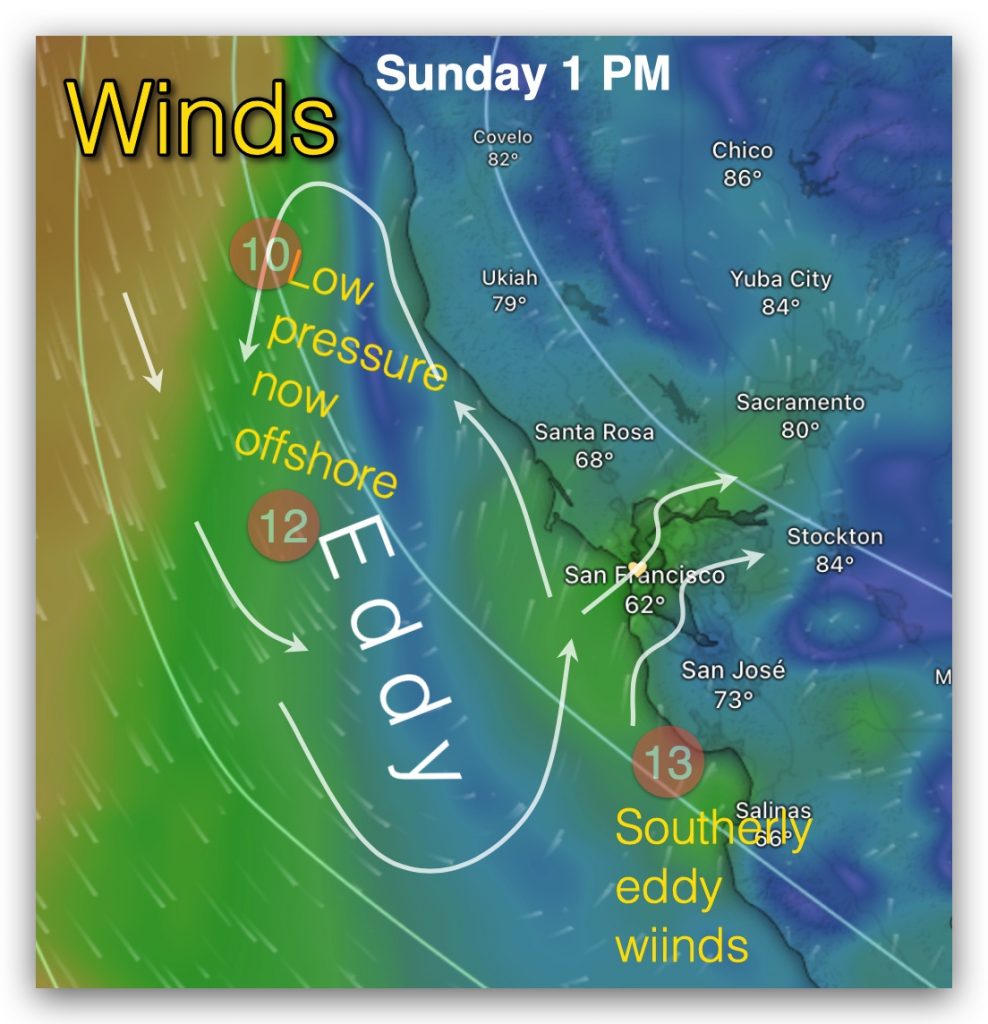Today, Friday, June 11, 2023, it really looks like another “Big Eddy” develops this Sunday.
Drop to the bottom of this blog to see how it happens.
For background, keep reading:
Most of you know that our San Francisco Bay Area wind patterns are changing.
The upper-level winds that make up upper ridges and troughs are much more variable than several decades ago.
These changes make our primary wind machines, the North Pacific High and the Central Valley thermal Low more variable in size, location and shape.
So our pressure gradients tend to move in different patterns and more frequently than years ago so forecasting has become far more difficult despite greatly improved. models and other forecast tools.
Three of the most noticeable changes in our summer winds have been:
- The decreasing frequency of big marine surges after a heat wave that used to give us several days of powerful all-day WSW winds at Sherman Island and strong afternoon winds at Larkspur and Pt. Isabel.
- The increasing frequency of counter-clockwise spinning small eddies just west of the Golden Gate that create southerly AM and early afternoon winds, then often died mid-afternoon, allowing NW ocean winds to curve into the Golden Gate as WSW winds and as WNW winds on the Peninsula.
- And an increasing number of huge eddies that morph into low-pressure areas off much of the Northern California coast and bring several days of locally strong southerly winds to the Bay Area, spoiling the coast winds and most sites on the Peninsula while helping Larkspur and Pt. Isabel.
This visual blog explores the expected evolution of one of those huge eddies that I sometimes call “Big Eddy”
We start with mild NW ocean winds from the North Pacific High on Saturday. But notice how the isobar lines show a ridge from the NPH moving into the Pacific Northwest and far Northern California. Also notes how this causes the Central Valley low pressure to move closer to the coast and also causes the winds at 1000 to 2500 feet aloft to turn from NW to NNW to N.
Now just follow the numbers from 4-13 to see how this “Big Eddy” develops Saturday night and Sunday.



